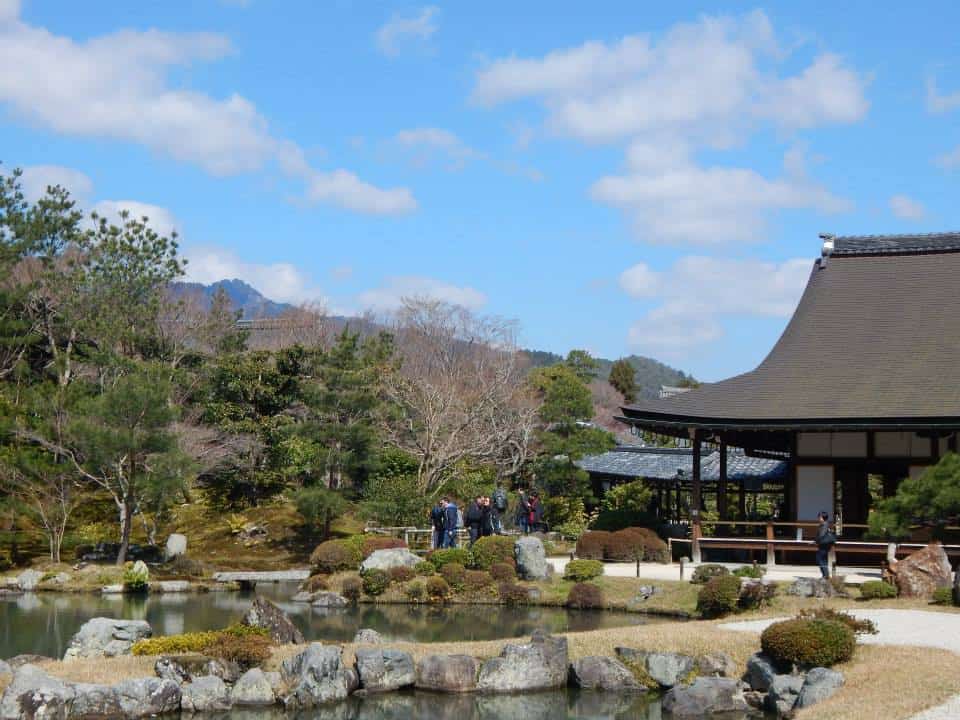Despite the country’s reputation for innovation, robots, and the latest in everything high-tech, it’s the perfect place in which you can relax, unwind, and collect your thoughts.
Contrast can be found almost anywhere; the lightning speed of the shinkansen bullet trains versus a peaceful stroll through a Zen garden, the steel skyscrapers of Tokyo against the ancient Shinto temples of Kyoto, the waves of salarymen hurriedly rushing through Shibuya crossing or a monk in quiet contemplation of solitude.
Throughout these contradictions, a current of Zen, or calmness, runs through almost all facets of Japanese culture.

I’d had Japan on my “bucket list” for some time. Finally, I decided to take the plunge and plan a solo visit to the land of the rising sun.
However, going to a non-English speaking country always makes one a bit nervous. Would I miss my train? Would I get lost? Would I wander aimlessly through Tokyo forever, unable to find my hostel? Probably not. But planning a trip to a country so different from my own had me on edge.
Step one was figuring out where exactly I wanted to go, and what I wanted to do.
I prefer to find out as much as I can about a place first, then narrow it down to my must-see spots.
I am a big fan of the Lonely Planet guidebooks, and consult them before most of my trips. I must have spent several weeks reading their Japan guide from cover to cover in the lead up to this trip. I devoured itineraries and earmarked pages, so engrossed that I nearly missed my stop while reading the train to work one day. Oops.
There is a huge variety of places and terrains to be explored in Japan, whether you find peace through tranquil mountainous surroundings, prefer the excitement of exploring ancient temples, or yearn for the thrill of getting lost in the hustle and bustle of the sprawling metropolis of Tokyo.
To me, at least, the unique culture of Japan is best explored alone, where you can find your own contrasts, and hopefully bring a bit of Zen into your life too. Not to say it isn’t also amazing with a partner or friend, but I really appreciated the challenge and adventure of figuring it out on my own.

Ultimately, I locked in a 12-day plan: I would start with a few days in Tokyo and Nikko; then move on to Mount Fuji, Hakone, and Lake Ashi; followed by the high speed bullet train over to Kyoto; and a day trip to Nara.
Bags packed and guidebook in hand, I set off for the airport, excited but with some trepidation.
My worries easily subsided as soon as I arrived at Tokyo’s Narita International Airport, after a 10-hour direct overnight flight from Sydney. It was a relief to find help available most of the time, in the form of visitor information centers with volunteers to assist confused tourists (such as myself) navigate the airport to find the correct train into Tokyo.
Despite this guidance, there were a few moments where I found my heartbeat slowly increasing, with the realization that I had no idea where I was going. To say the Tokyo subway can be confusing is an understatement. It is made up of two private lines, some intersect, some don’t, and some require separate tickets — none of which I knew while trying to find my way around town on my first day.
I had no idea what to do. So, I asked someone. They weren’t sure, so I asked someone else. Lesson learned.
While it can be stressful and panic- or fear-inducing to not understand where you’re going, with patience and perseverance, you’ll likely eventually figure it out. It just may require the help of your guidebook, a translation app, or, in my case, a kind passer-by.
After sorting myself (and the subway) out, I couldn’t wait to start exploring.

I fell in love with everywhere I went.
I started in Tokyo, staying at a welcoming hostel in the Asakusa neighborhood, then explored the mountainous countryside of Hakone, before taking the bullet train on to Kyoto and Nara.
At one point, I found myself in a hundred-year-old ryokan (or, traditional Japanese guest house) on the foothills of Mount Fuji.
A bubbling brook outside my window provided the calming sound of rushing water, and a beautiful peace and calmness radiated from the room. It was only disturbed by the shuffling of my slippered feet across the ancient hardwood floor as I made my way to the ryokan’s onsen to soak in hot water as the snow fell around me.
Returning to my room, free from the omnipresent distraction of WiFi or television, I wrote in my travel diary as I fell asleep on my tatami mat. In that moment, I found the most inner peace I have ever had anywhere in the world.
Below: Fukuzimiro Ryokan, Hakone.
If the serenity doesn’t do it for you, the cuisine will.
Dining alone is as common in Japan as anywhere else. The food in Japan is mind-blowing, so don’t let the fear of dining alone stop you, if you’re a solo traveler.
Towards the beginning of my trip, I spent a day in Nikko, a town not far from Tokyo, exploring by foot the area’s shrines and temples. While spectacular, it was cold and snowy — and very, very hilly.
Tired, freezing, and worn out, I settled into a small cafe, Maruhide Shokudo, for some lunch. The speciality of Nikko is a tofu called yuba, and this cafe offered tomato yuba ramen, a traditional noodle dish. Not something I ever would have ordered back at home.

To date, this stands out in my mind as one of the most satisfying meals I’ve ever had, seriously. Warm, cozy, and delicious, it hit the spot after a morning out in the cold. If chicken soup is food for the soul, yuba ramen is food for the soul of the Japanese traveler. The food was incredible everywhere- I loved the casual soba and tempura lunches in Tokyo, the taiyaki, a sweet, red-bean cakes in the shape of a fish, commonly found from street vendors in Kyoto, and of course the green tea and sakura ice cream of Nara.
Japan is often ranked as one of the world’s safest and most peaceful countries.
This only adds to its appeal as a destination for women who travel solo.
I never felt unsafe in Japan at any time of day, but I always made sure to exercise a normal amount of caution, and tried to book my train or subway travel so I wouldn’t arrive in a strange place late at night.
I did find Japanese people to be very inquisitive, especially as a non-Asian female (I stood out quite a bit). People were keen to practice their English or ask where I was from and how I liked Japan. I took it as genuine curiosity, not something to be afraid of.
It’s interesting to note me was that subways and trains in most Japanese cities offer a “women only” carriage, so that women can feel safer — especially during peak travel hours, where the trains can get packed like sardines. The fact that they are pink was a dead-giveaway (gender stereotypes aside), so I could usually easily locate them despite not speaking the language.
“When in Rome,” I thought to myself (despite my strong belief in equality), and hopped onto one of the pink cars on my first day there. It was therefore a bit of a let-down to see both men and women on the carriages. The system has failed, I think sadly to myself. On further investigation, I discovered that they’re reserved for women only in peak rush hour times, when trains are most crowded.
Despite the overall safety of the country, assault has been an issue for women passengers on occasion, hence the introduction of the pink carriages. It’s not something to constantly worry about as much as it is something to be cognizant of (as in most cities). Either way, these separate cars can be a great option for solo travelers with extra concern about feeling safe on a packed train.

As an aside: If you are going to be doing a lot of long-distance travel, it’s definitely worth purchasing a Japan Rail Pass. It’s only available for purchase before you get to Japan, and can work out substantially cheaper than purchasing tickets separately. I worked out and compared the individual prices of my train fares to what I spent on the Japan Rail Pass, and the savings were substantial.
Over my two weeks in the country, I think it’s safe to say that I found the beauty of solo travel in Japan. It was incredible to immerse myself in a culture so thoroughly unique, ancient, and special. I soaked it all in, lived every moment in the present, and forgot about everything else in life, which left space for self-reflection, relaxation, and a new appreciation for the world.
Pushing yourself into a completely new environment is a great way to learn what you’re made of and test yourself, all while having a fantastic time.
Although beauty can be found everywhere in the world, there’s nowhere like Japan.




It’s been more than 10 years since I was in Japan…but reading this I was right back there! Thanks Katie! You write beautifully, very evocative! A great read!
Thank you so much! So nice to hear that it reminded you of your trip, really appreciate the kind words 🙂
I spent a week in Tokyo by myself. Definitely agree Japan is a great place for solo travelers. I just wish I had been able to more for the country.
Yes
Yes, it’s such a great place! I’d like to go back and see more also